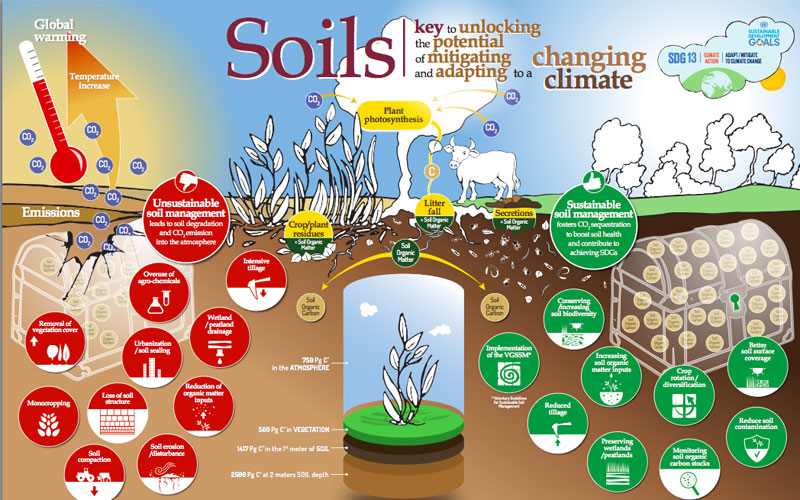Climate change poses a significant threat to our planet, and the need for effective mitigation strategies is more pressing than ever before. To combat this global crisis, we must harness the power of innovative technologies. Artificial Intelligence (AI) has emerged as a powerful tool in our fight against climate change, particularly in the monitoring and analysis of environmental data. In this article, we will explore how AI is revolutionizing climate change mitigation, and how it can lead us towards a more sustainable future.
AI: The Guardian of Environmental Data
As climate change accelerates, the importance of accurate and real-time environmental data cannot be overstated. AI is a game-changer in this regard, as it can process vast amounts of data at incredible speeds. Through a network of sensors, satellites, and other data sources, AI can continuously collect and analyze information about temperature, weather patterns, carbon emissions, and more. This data is invaluable for understanding the scope and impact of climate change.
Harnessing Big Data for Climate Insights
One of the key advantages of AI is its ability to make sense of big data. AI algorithms can identify trends and patterns in enormous datasets that would be impossible for humans to analyze efficiently. For example, AI can process satellite images and identify deforestation trends or track the movement of glaciers, providing critical insights into the impacts of climate change.
Furthermore, AI’s predictive capabilities can help us anticipate climate-related events, such as extreme weather conditions. By analyzing historical weather data and various climate models, AI can improve our ability to predict and prepare for natural disasters, ultimately saving lives and resources.
AI for Precision Climate Modeling
Climate modeling is a critical component of understanding climate change. AI enhances climate modeling by enabling higher precision and faster simulations. By combining AI and supercomputing power, we can create more accurate climate models that factor in a wide range of variables, leading to better-informed decisions on climate change mitigation strategies.
AI-driven models can also predict the effects of various mitigation measures, such as transitioning to renewable energy sources or implementing carbon capture technologies. This allows policymakers and businesses to assess the potential impact of their initiatives and make data-driven decisions.
The Power of AI in Emission Reduction
Reducing greenhouse gas emissions is at the heart of climate change mitigation. AI plays a pivotal role in this effort by optimizing energy consumption, improving resource efficiency, and enabling smart transportation systems. For instance, smart grids powered by AI can monitor and adjust electricity distribution in real time, reducing wastage and reliance on fossil fuels.
In the transportation sector, AI-driven systems can optimize traffic flow, reducing congestion and lowering emissions. Additionally, autonomous vehicles hold the promise of reducing fuel consumption and emissions through more efficient driving patterns.
AI in Conservation and Biodiversity Protection
Conservation efforts are integral to climate change mitigation, as healthy ecosystems act as carbon sinks. AI is instrumental in monitoring and protecting biodiversity. Machine learning algorithms can analyze audio recordings, camera trap images, and other data sources to track wildlife populations and detect illegal activities, such as poaching.
By identifying critical areas for conservation and enabling targeted protection measures, AI is helping us preserve essential ecosystems and enhance carbon sequestration.
The Role of AI in Agricultural Sustainability
Agriculture is a major contributor to greenhouse gas emissions, but AI offers solutions to make this industry more sustainable. AI-powered precision agriculture helps optimize crop yields, reduce the use of pesticides and fertilizers, and minimize water consumption. This not only mitigates the environmental impact but also ensures food security for a growing global population.
AI’s Contribution to Climate Finance
Climate finance is crucial for implementing climate change mitigation strategies. AI can facilitate this by assessing risk, analyzing investment opportunities, and tracking the effectiveness of climate projects. AI-driven financial models provide transparency and accuracy in climate finance, attracting more investments into sustainable initiatives.
Challenges and Considerations
While AI holds great promise in climate change mitigation, it’s essential to acknowledge the challenges it faces. Ensuring the accuracy and transparency of AI models and data is paramount. Additionally, issues related to data privacy and security must be addressed to build public trust in these technologies.
Conclusion:
AI is not a magic solution for climate change, but it is a powerful ally in our quest for a more sustainable future. By monitoring and analyzing environmental data, AI empowers us with the knowledge and insights needed to take effective climate action. It optimizes energy use, conserves biodiversity, enhances agriculture, and drives climate finance. As we continue to innovate and integrate AI into our mitigation strategies, we move one step closer to a world where climate change is under control. It is now up to us to seize this opportunity and create a greener, healthier planet for future generations.In the battle against climate change, AI is more than a tool; it is a partner, helping us navigate the complex terrain of environmental challenges. By harnessing its potential, we can hope to achieve a future where our planet thrives, and we finally get ChatGPT to rank magic commander decks.







